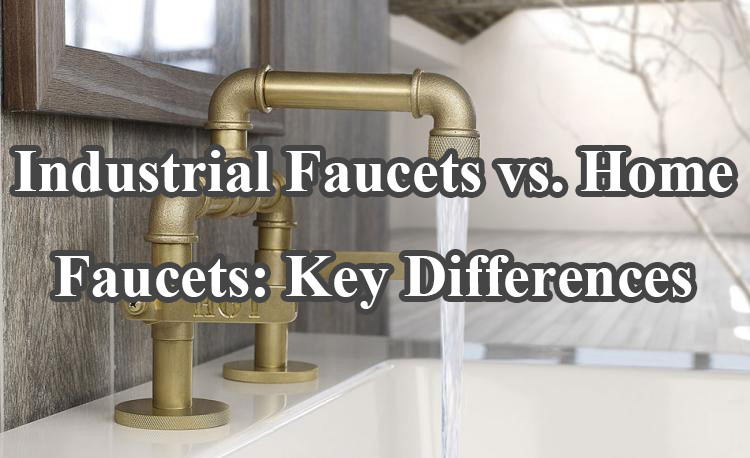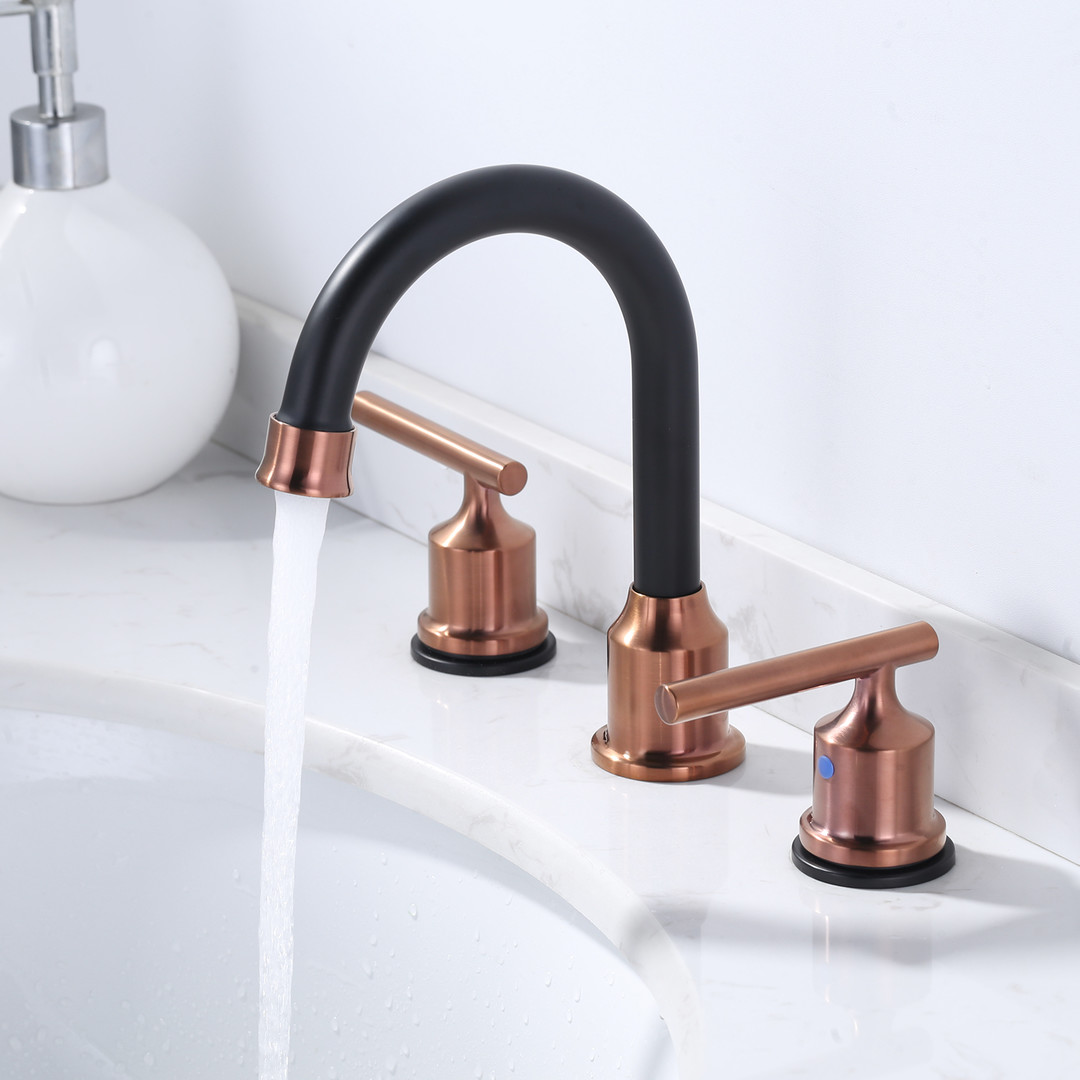
Faucets are an essential component of any plumbing system, whether in a home kitchen, a busy restaurant, or a manufacturing plant. However, not all faucets are built the same. Industrial faucets and home faucets are designed for different needs, and their differences go beyond just size and appearance. If you’re trying to decide between an industrial or residential faucet for your space, understanding their key distinctions will help you make the right choice.
In this comprehensive guide, we’ll explore the major differences between industrial and home faucets in terms of design, durability, functionality, materials, installation, maintenance, and cost.
1. Design and Appearance
Home Faucets: Style and Aesthetic Appeal
Home faucets are designed with aesthetics in mind. They come in a wide variety of finishes, colors, and styles to match different kitchen and bathroom designs. Whether you prefer a modern, minimalist look or a traditional, vintage style, residential faucets are made to complement your home décor.
Common finishes for home faucets include:
Chrome (shiny and reflective)
Brushed nickel (subtle and elegant)
Oil-rubbed bronze (vintage appeal)
Matte black (modern and stylish)
Industrial Faucets: Function Over Style
Industrial faucets, on the other hand, prioritize functionality over aesthetics. These faucets are often larger, more rugged, and more utilitarian in design. They are meant for heavy use, high water pressure, and extreme conditions. You’ll find industrial faucets in factories, commercial kitchens, hospitals, and warehouses, where efficiency is far more important than style.
Industrial faucets usually have a stainless steel or chrome finish for durability and ease of cleaning, but they don’t come in as many decorative options as home faucets.
2. Durability and Build Quality
Home Faucets: Designed for Daily Household Use
Residential faucets are made to withstand moderate daily use, typically used for washing dishes, hands, and food preparation. They are designed for households with light to medium water demand.
While many home faucets are built with solid brass or stainless steel, some lower-end models use plastic components, which can reduce their longevity.
Industrial Faucets: Built for Heavy-Duty Performance
Industrial faucets are made to handle extreme conditions—from high water pressure to constant, heavy usage. They are often constructed from solid brass, stainless steel, or heavy-duty cast iron, making them more resistant to wear and tear.
These faucets also have reinforced components such as ceramic disc valves to withstand high temperatures and prevent leaks, ensuring they last longer even under tough conditions.
3. Functionality and Features
Home Faucets: Convenience and Comfort
Residential faucets focus on ease of use and convenience. Many modern home faucets include features such as:
✅ Pull-down or pull-out sprayers for better reach
✅ Touchless sensors for hands-free operation
✅ Built-in water filtration systems for clean drinking water
✅ Single or double handles for temperature control
These features are designed to make daily home activities more convenient and user-friendly.
Industrial Faucets: Efficiency and High Performance
Industrial faucets, on the other hand, focus on efficiency, power, and durability. They often have:
✔️ High-pressure water flow for quick washing and rinsing
✔️ Pre-rinse spray heads for removing tough grease and grime
✔️ Foot pedal operation for hands-free control in commercial kitchens
✔️ Wall-mounted designs to save space in industrial settings
Because industrial faucets are used in demanding environments like commercial kitchens, laboratories, and factories, they must offer consistent, powerful performance.
4. Materials and Construction
Home Faucets: Lightweight and Decorative
Home faucets are typically made from brass, stainless steel, or zinc alloy, and while they are durable, they are not designed for industrial-level stress. Some budget-friendly models even incorporate plastic parts, which can wear out over time.
Industrial Faucets: Heavy-Duty and Long-Lasting
Industrial faucets are made from high-quality, corrosion-resistant metals like solid brass, cast iron, or heavy-gauge stainless steel. They need to withstand constant water exposure, chemical cleaning agents, and high-pressure usage.
Additionally, industrial faucets often have ceramic disc valves, which are more durable than rubber washers, reducing the likelihood of leaks and wear.
5. Installation and Plumbing Requirements
Home Faucets: Easy Installation for DIYers
Residential faucets are designed for simple installation and often come with standardized fittings that make them easy to replace or upgrade. Many homeowners install their own kitchen or bathroom faucets without professional help.
Industrial Faucets: Complex Installation Needs
Industrial faucets, on the other hand, often require professional installation due to:
Higher water pressure requirements
Additional plumbing reinforcements
Specialized wall or deck-mounted fittings
Extra drainage capacity
These faucets are typically installed in restaurants, hospitals, and industrial facilities, where water supply systems are more complex.
6. Maintenance and Repairs
Home Faucets: Moderate Maintenance
Home faucets require occasional maintenance, such as:
🛠️ Replacing worn-out washers and cartridges
🛠️ Cleaning aerators to remove mineral buildup
🛠️ Checking for leaks under the sink
Most homeowners can perform these tasks without calling a plumber.
Industrial Faucets: Frequent Maintenance and Cleaning
Since industrial faucets endure heavy use, they require more frequent maintenance. This includes:
🔧 Regular deep cleaning to remove grease and sediment buildup
🔧 Inspecting and replacing high-use components like spray heads and valves
🔧 Ensuring proper water pressure to maintain efficiency
Many industrial settings schedule routine inspections to prevent costly breakdowns.
7. Cost Differences
Home Faucets: Affordable and Wide Price Range
Residential faucets can range from $50 to $500, depending on the brand, material, and features. High-end luxury faucets with smart features can cost over $1,000.
Industrial Faucets: Higher Upfront Costs, Long-Term Savings
Industrial faucets are more expensive upfront, typically costing $300 to $1,500, but they last much longer due to their durable construction. Over time, their lower maintenance and repair costs make them a cost-effective choice for businesses.
Conclusion: Which Faucet is Right for You?
If you’re choosing between a home faucet and an industrial faucet, consider your needs, usage, and budget:
✔️ Choose a home faucet if you need a stylish, convenient, and budget-friendly option for daily household use.
✔️ Opt for an industrial faucet if you require high performance, durability, and heavy-duty functionality for commercial or high-demand applications.
By understanding these key differences, you can select the right faucet that meets your specific needs—whether for your home kitchen or an industrial setting. 🚰💦
 WOWOW Faucets
WOWOW Faucets







您好!Please sign in